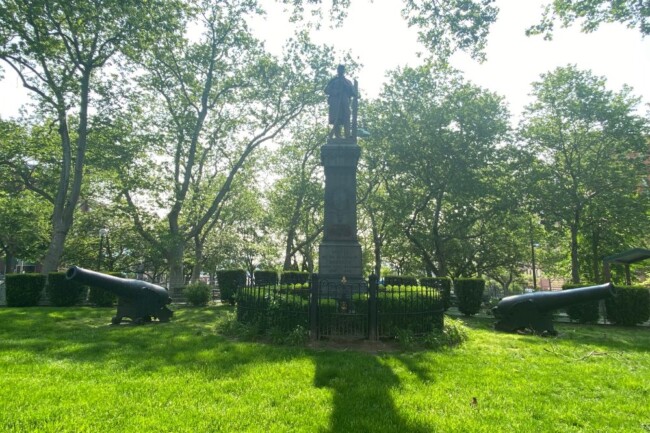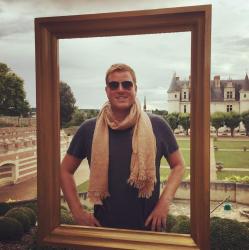Small and unassuming, some of history’s most distinguished figures have resided along Stevens Park in Hoboken. Two world-famous LGBTQ+ activists and two of the most acclaimed artist in history have lived along the perimeter of the park. Stevens Park has been featured in an Oscar-winning film, while the cannons situated within the park are the reason San Francisco belongs to the United States. For such a little space, Stevens Park packs a big history, therefore, read on to find out Stevens Park’s highlights.
LGBTQ+ Activists: Randy Wicker and Marsha P. Johnson
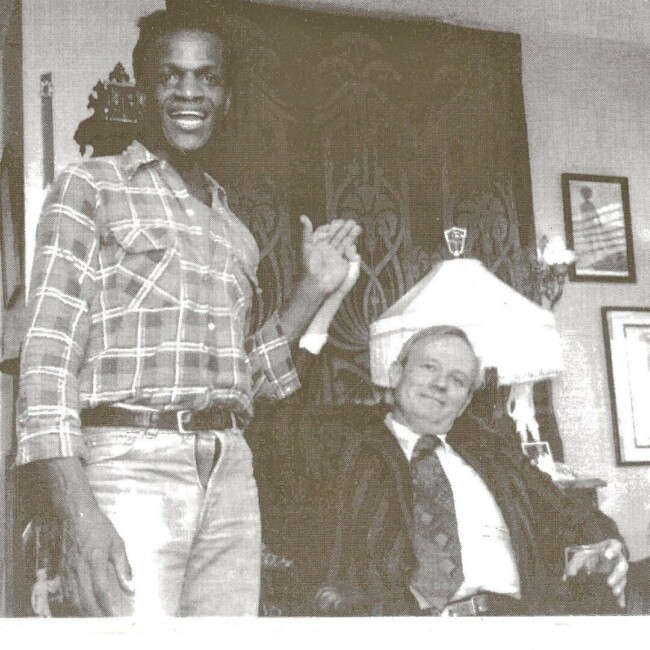 (Photo Credit: Randy Wicker)
(Photo Credit: Randy Wicker)
Along the south side of the park is one of the most important apartments in LGBTQ+ History. For 12 years, activists Randy Wicker and Marsha P. Johnson shared an apartment at 1 Marine View Plaza.
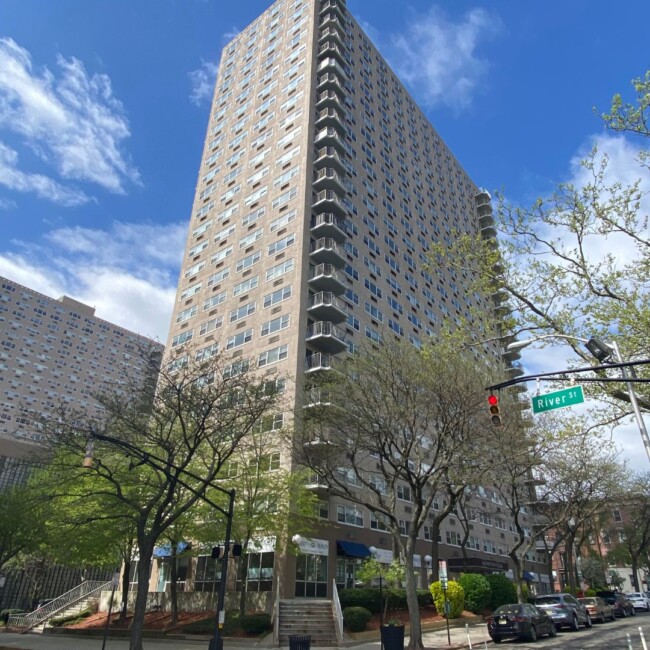
For their contributions to the LGBTQ+ Movement, Marsha and Randy are both immortalized at the Stonewall National Monument in Greenwich Village. Randy was the first to move to Hoboken in 1976 and is the last living person in the famous “Sip In” photograph.
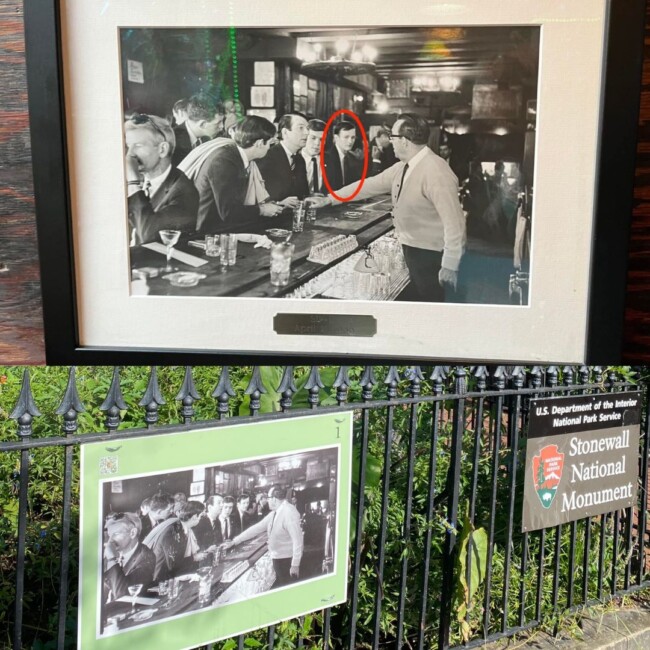
The “Sip In” is credited as the first open act of gay civil disobedience in history, three years before the Stonewall Riots. In 1966, bars could refuse service to gay men and women under the auspice that their mere presence was “disorderly.” Inspired by “sit-ins” in the south, members of the Mattachine Society decided to challenge this law. They arrived at the West Village bar, Julius, and told the bartender: “We are homosexuals…We are orderly, we intend to remain orderly, and we are asking for service.”
When denied service, a New York Times reporter snapped the now-famous photograph—which still hangs at Julius. In it, visitors can see Randy sitting at the bar with his fellow Mattachine Society members. The incident made headlines across New York, the United States, and then the world. It prompted the courts to rule that gays had the right to peacefully assemble and was the first step in the fight for LGBTQ+ rights in the United States.
In 1980, Randy took in Marsha P. Johnson as a roommate.
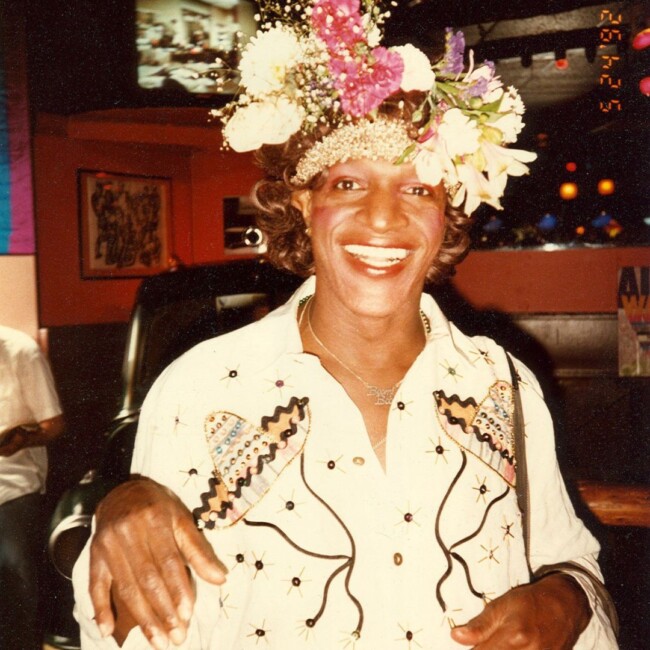
(Photo Credit: Randy Wicker)
Marsha has become so renowned, RuPaul has described Marsha as the “true Mother of Drag.” A trans woman, Marsha was known as “The Mayor of Christopher Street.” A leading figure in the Stonewall Uprising, she also co-founded the activist group Street Transvestite Action Revolutionaries (S.T.A.R.) and established the STAR House, the first-ever shelter for homeless gay and trans youth in 1970. She even modeled for Andy Warhol and was incredulously turned away from galleries displaying her own image.
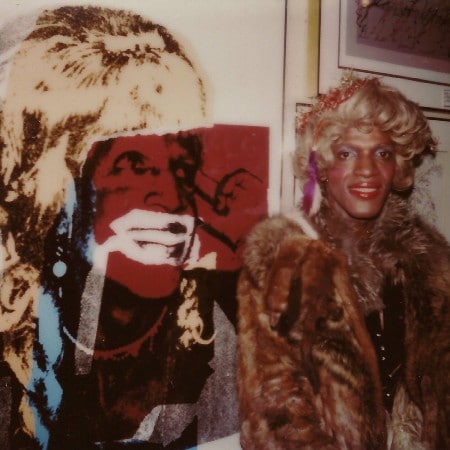
(Photo Credit: Randy Wicker)
The very year she moved to Hoboken, Marsha was invited to ride in the lead car of New York’s annual Gay Rights Parade. She’s since been honored with her own Google Doodle and even has a park named after her in Brooklyn.
Read More: The History of New Jersey’s Piney Culture
Both Randy and Marsha are included in the “pioneers, trailblazers, and heroes” inducted at the National LGBTQ Wall of Honor within the Stonewall National Monument in Greenwich Village.
The Artists: Alfred Stieglitz and Wilhelm de Kooning
At opposite corners of the park lived two internationally renowned artists: Alfred Stieglitz and Wilhelm de Kooning. Alfred Stieglitz is the most famous artist you may never have heard of and forever changed the course of art in America.
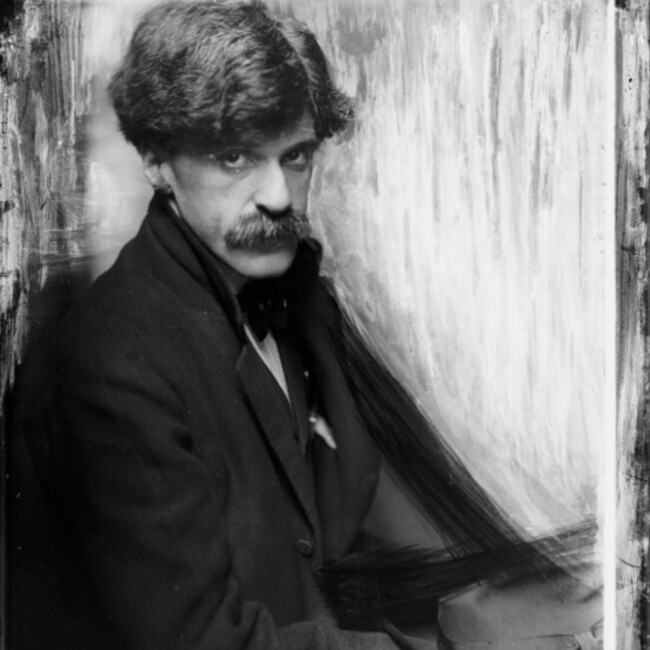
Alfred was born on the Northwest corner of the park in his family’s home at 500 Hudson Street in 1864. Later, he famously declared: “I was born in Hoboken. I am an American. Photography is my passion. The search for Truth my obsession.”
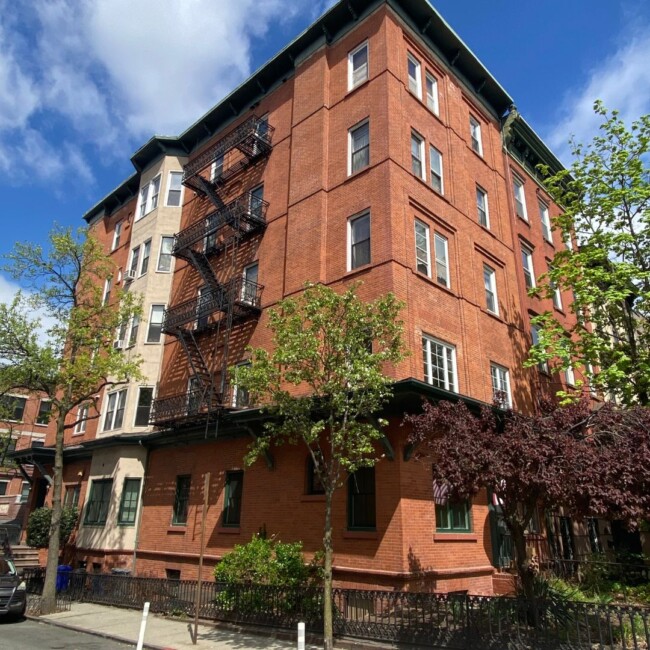
In 1905, he opened his gallery, 291 It was the first venue in America to exhibit works by avant-garde, European artists such as Pablo Picasso, Paul Cézanne, Henri Matisse, Auguste Rodin, Henri Rousseau, Marcel Duchamp, and many others.
Not only did Alfred introduce modernism to the United States, but he also helped elevate photography from a quaint hobby into a serious, fine art. Today, he’s largely remembered as the husband of Georgia O’Keeffe, but Alfred was already a titan of the art world when he exhibited Georgia’s work in his gallery in 1917. The two married, in 1924.
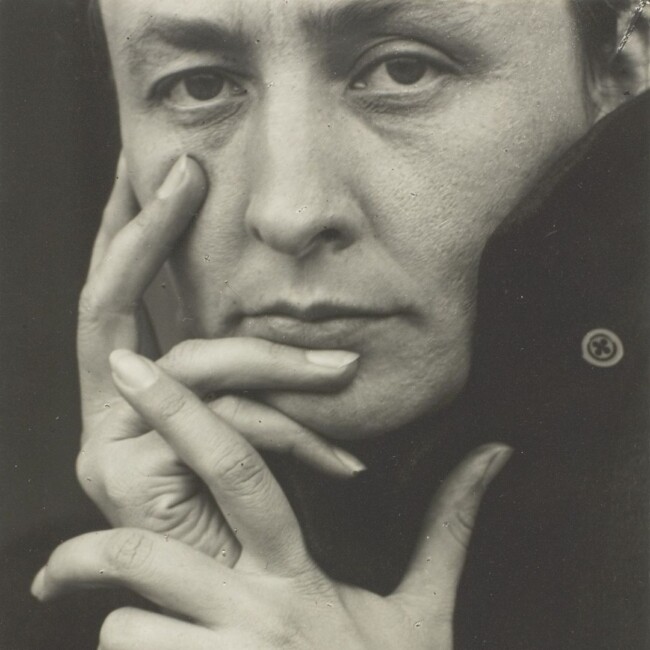
Willem de Kooning arrived in Hoboken as a stowaway aboard a ship from his native Netherlands in 1926.
For his first home in America, Willem settled at the Southeast section of the park, in the Dutch Seamen’s Home, which was a charitable organization aiding mariners.
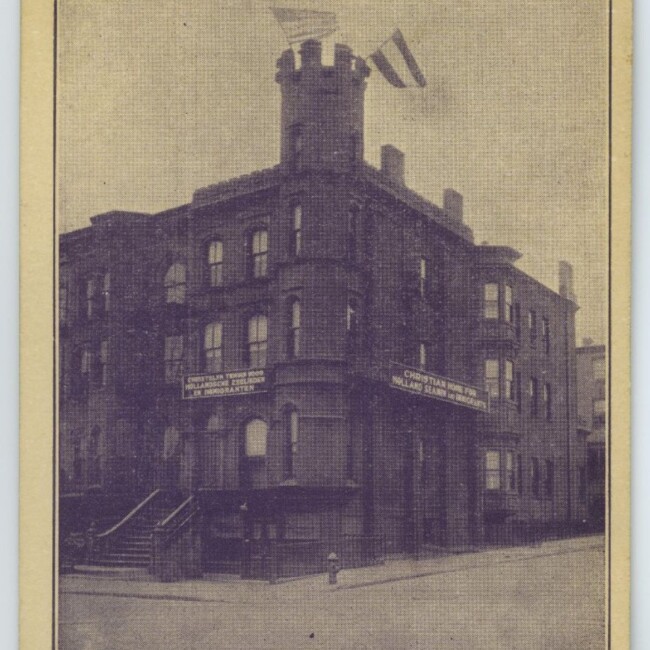
(Photo Credit: Hoboken Historical Museum)
Willem enjoyed the park, even taking a picture at the Stevens Institute of Technology building.
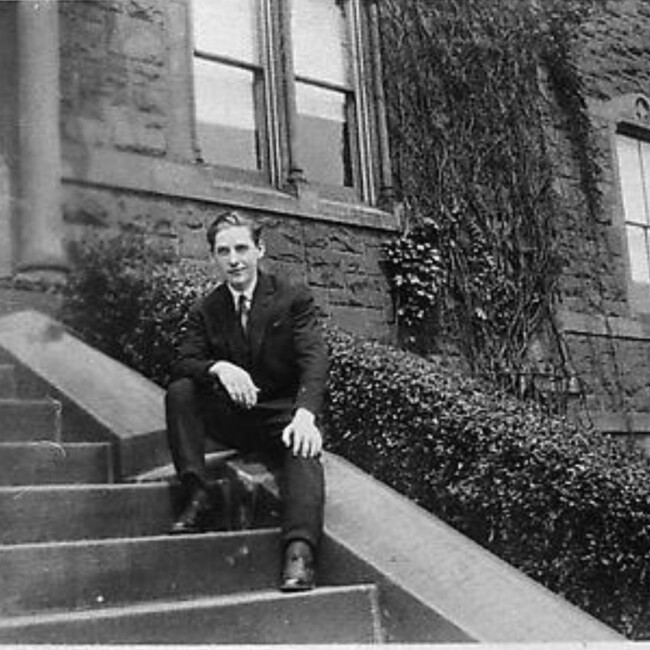
(Photo Credit: Hoboken Historical Museum)
He lived in Hoboken for nearly two years before going on to become one of the most famous abstract expressionists of his era. In 2015, his painting, Interchange, held the record as the most expensive painting ever purchased when it sold for $300 million. It was eclipsed by the sale of Leonardo da Vinci’s Salvator Mundi in 2017.
The Buildings
Not only does Stevens Park boast a stunning array of residents, it also showcases two famous buildings: Sts. Peter & Paul Roman Catholic Church and Edwin A Stevens Hall.
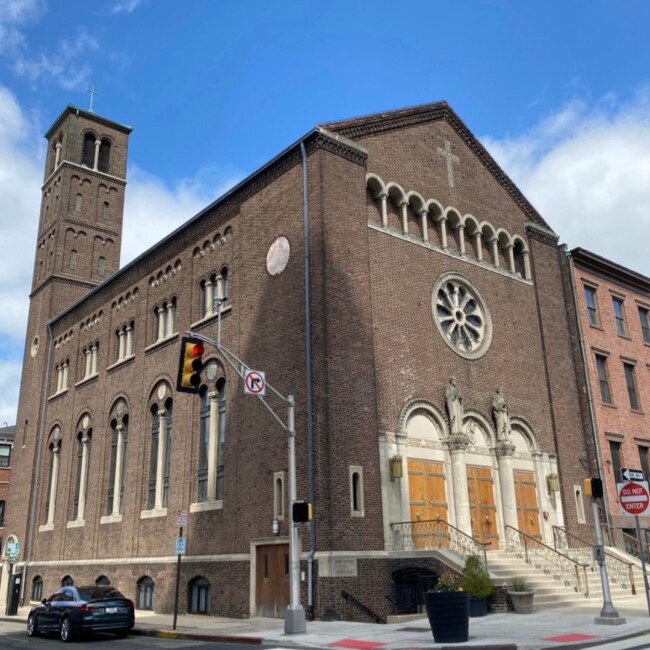
Saints Peter & Paul Roman Catholic Church was featured in the Oscar-winning film On The Waterfront with Marlon Brando (1954).
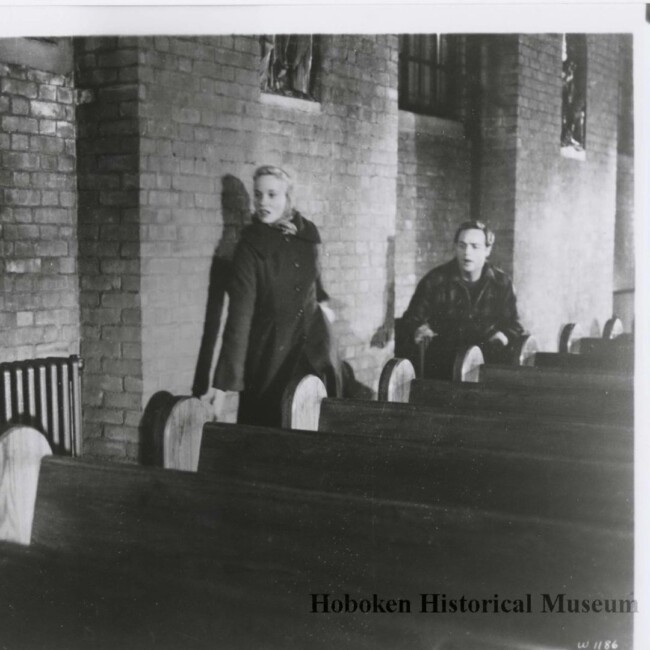
(Photo Credit: Hoboken Historical Museum)
Legendary director, Elia Kazan, used the church for most of the film’s interior shots, while he also shot scenes within the park itself.
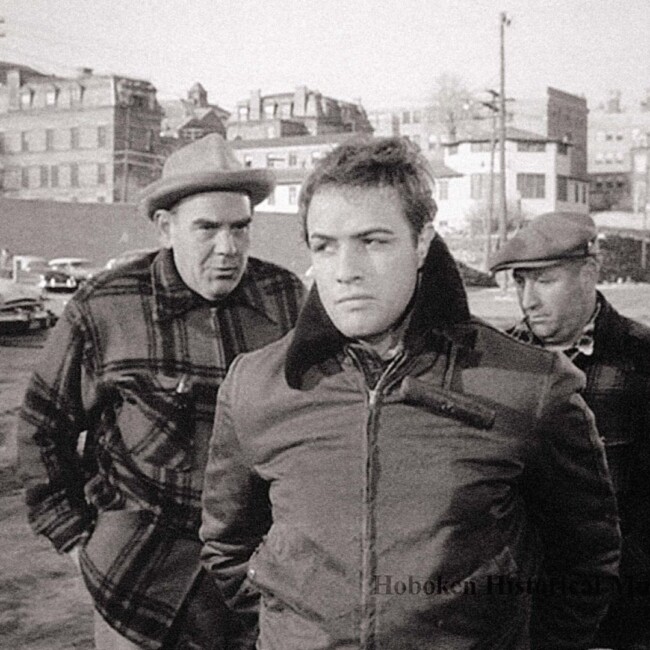
On the Northside of the park sits Edwin A Stevens Hall, Stevens Institute of Technology’s main building. The building was designed by Richard Upjohn, one of the most influential architects in American History. Richard became famous for his Gothic Revival churches and is largely credited with launching the style’s popularity in the United States.
Astute observers will likely recognize Richard’s most famous building: Trinity Church, at the end of Wall Street in Manhattan.
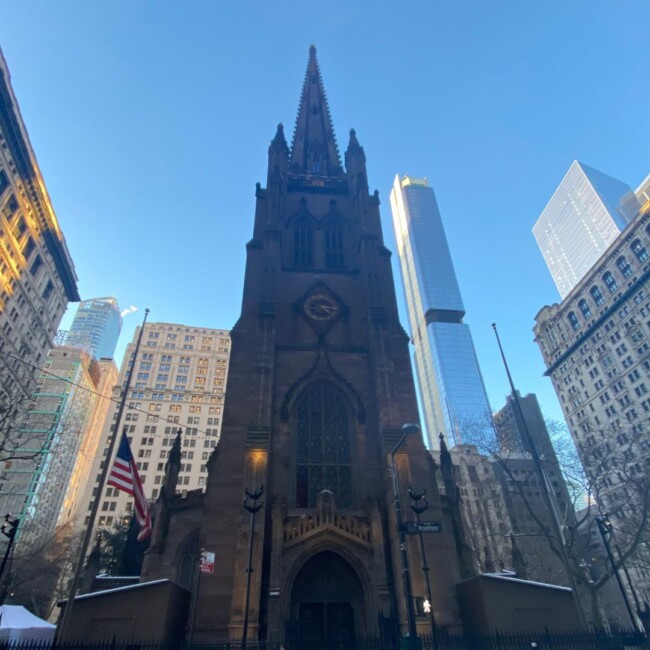
Richard also designed Hoboken’s All Saints Episcopal Church at 701 Washington Street in 1856:
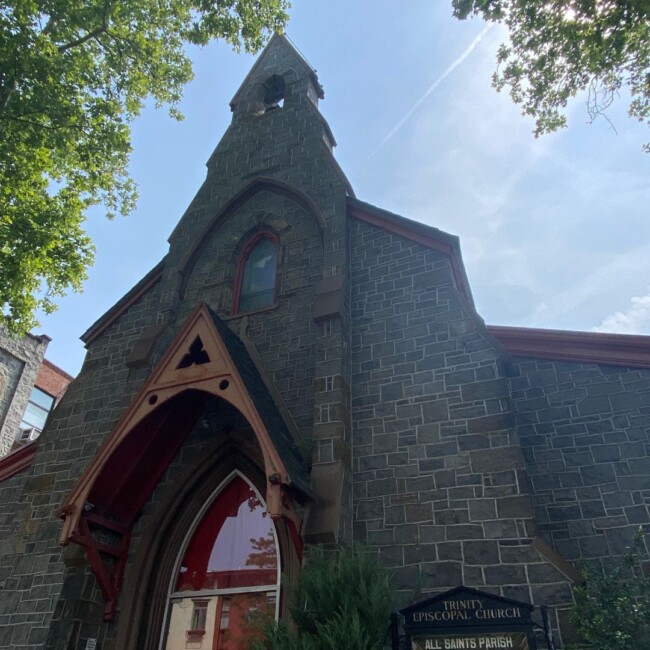
The Cannons Which Took San Francisco
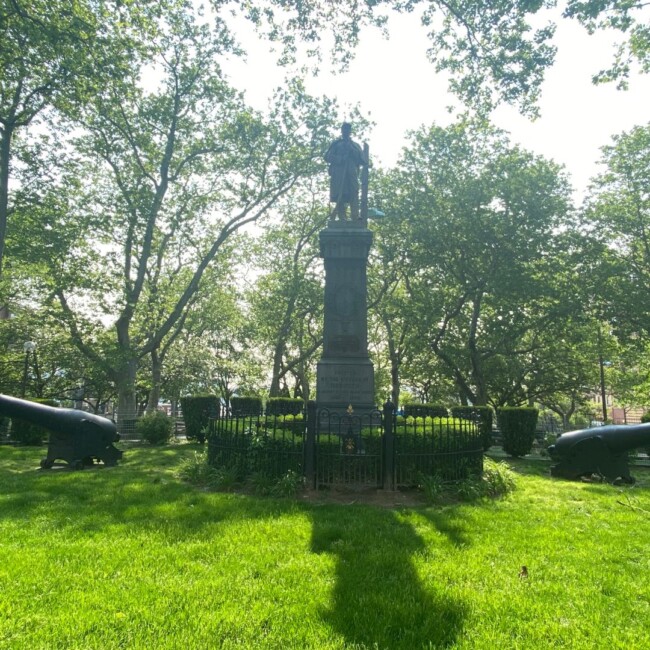
The reason San Francisco belongs to the United States can be found at the Westend of Stevens Park. These cannons armed the USS Portsmouth, which seized the port of Yerba Buena, today’s San Francisco, from Mexico during the Mexican-American War (1845-1848).
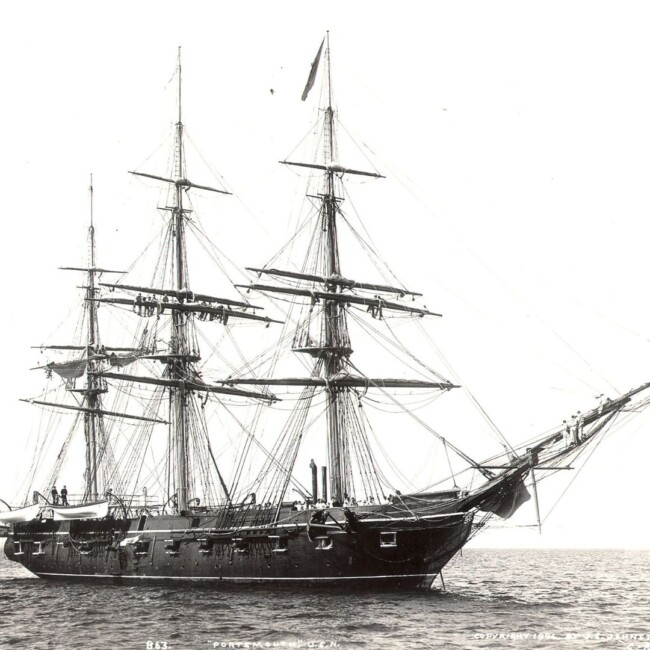
On July 9, 1846, the USS Portsmouth entered San Fransisco Bay manned by 220 sailors and enlisted men, along with a contingent of 27 marines. She fixed her cannons (the very cannons in Hoboken) upon a small Mexican force, garrisoned at the Presidio —the park currently situated at the base of the Golden Gate Bridge.
Fortunately, the cannons’ mere presence intimidated the Mexican garrison, and San Fransisco was handed over to Commander John Berrien Montgomery without ever having to fire a shot. The cannons were eventually fired, only after Montgomery delivered his victory speech. The marine band played Yankee Doodle and the Portsmouth fired a 21 gun salute, celebrating the capture of what is now San Francisco.
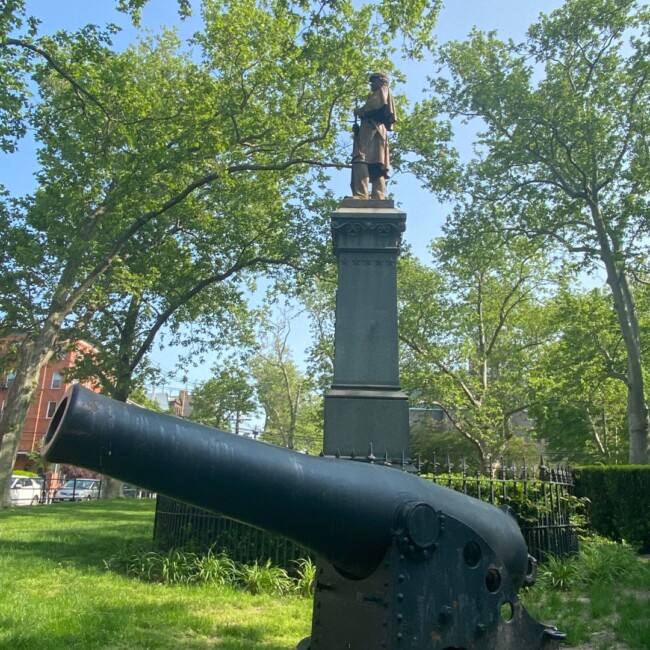
Of the ship’s 20 cannons, these two cannons are likely the last remaining guns in existence.
They were also used to suppress the slave trade when the USS Portsmouth patrolled the east coast of Africa for three years beginning in 1848. During the Civil War, the Portsmouth patrolled the Gulf of Mexico, blockading aid to the confederacy.
See More: All About George Washington’s Headquarters in Morristown
The cannons also some of the few U.S. cannons ever to fire upon mainland China, during the Battle of the Barrier Forts in the Second Opium War (1856-1860).
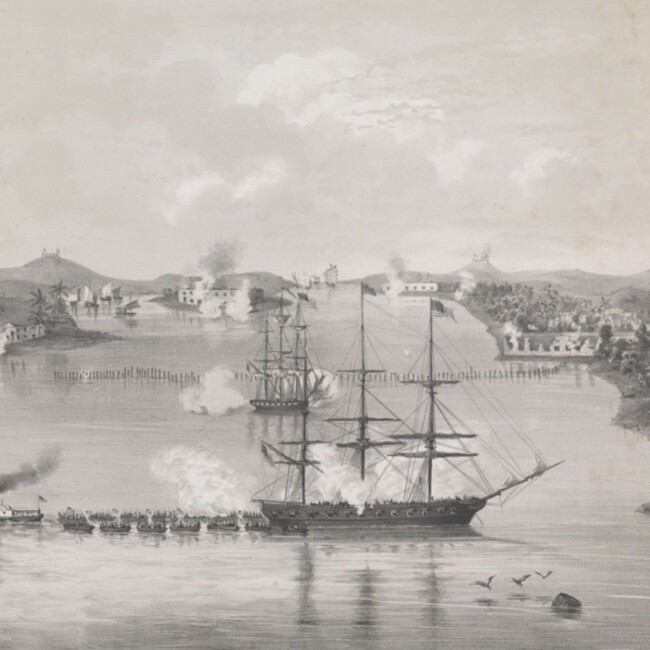
Once decommissioned, the Portsmouth remained in Hoboken from 1895 to 1911 for the use by the New Jersey Navel Reserve First Battalion, which was stationed in Hoboken. Eventually, the Portsmouth donated the two cannons to the Hoboken Civil War Soldiers Monument in Stevens Park.
The Portsmouth was eventually taken to Boston Harbor and given something of a Viking Burial in 1915 when she was set ablaze in a South Boston carnival attended by politicians and onlookers cheering as flamed pouring out of her empty gun ports, which once housed the cannons now situated in Hoboken.
Interestingly, Hoboken is not the only location where one can see the remains of the USS Portsmouth. Bank of America, founded in San Fransisco, uses the USS Portsmouth as its official logo. Founder Amadeo Giannini recognized the Portsmouth’s importance in capturing San Francisco. Today, service pins issued to Bank of America employees feature the ship’s image and name. Furthermore, the ship’s helm was removed and displayed at the Bank of America Headquarters.

